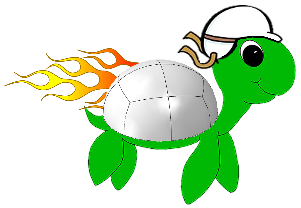"""Create a sphere geometry through Abaqus CAE GUI, Abaqus Python API, or through a command-line interface."""
import inspect
import os
import sys
import numpy
filename = inspect.getfile(lambda: None)
basename = os.path.basename(filename)
parent = os.path.dirname(filename)
grandparent = os.path.dirname(parent)
sys.path.insert(0, grandparent)
from turbo_turtle_abaqus import (
_abaqus_utilities,
_mixed_settings,
_mixed_utilities,
parsers,
vertices,
)
[docs]
def main(
inner_radius,
outer_radius,
output_file,
input_file=parsers.sphere_defaults["input_file"],
quadrant=parsers.sphere_defaults["quadrant"],
revolution_angle=parsers.sphere_defaults["revolution_angle"],
y_offset=parsers.sphere_defaults["y_offset"],
model_name=parsers.sphere_defaults["model_name"],
part_name=parsers.sphere_defaults["part_name"],
):
"""Wrap sphere function with file open and file write operations.
:param float inner_radius: inner radius (size of hollow)
:param float outer_radius: outer radius (size of sphere)
:param str output_file: output file name. Will be stripped of the extension and ``.cae`` will be used.
:param str input_file: input file name. Will be stripped of the extension and ``.cae`` will be used.
:param str quadrant: quadrant of XY plane for the sketch: upper (I), lower (IV), both
:param float revolution_angle: angle of rotation 0.-360.0 degrees. Provide 0 for a 2D axisymmetric model.
:param float y_offset: vertical offset along the global Y-axis
:param str model_name: name of the Abaqus model
:param str part_name: name of the part to be created in the Abaqus model
"""
import abaqus # noqa: PLC0415
output_file = os.path.splitext(output_file)[0] + ".cae"
# Preserve the (X, Y) center implementation, but use the simpler y-offset interface
center = (0.0, y_offset)
try:
if input_file is not None:
input_file = os.path.splitext(input_file)[0] + ".cae"
# Avoid modifying the contents or timestamp on the input file.
# Required to get conditional re-builds with a build system such as GNU Make, CMake, or SCons
with _abaqus_utilities.AbaqusNamedTemporaryFile(input_file, suffix=".cae", dir="."):
sphere(
inner_radius,
outer_radius,
quadrant=quadrant,
revolution_angle=revolution_angle,
center=center,
model_name=model_name,
part_name=part_name,
)
abaqus.mdb.saveAs(pathName=output_file)
else:
sphere(
inner_radius,
outer_radius,
quadrant=quadrant,
revolution_angle=revolution_angle,
center=center,
model_name=model_name,
part_name=part_name,
)
abaqus.mdb.saveAs(pathName=output_file)
except RuntimeError as err:
_mixed_utilities.sys_exit(str(err))
[docs]
def sphere(
inner_radius,
outer_radius,
center=parsers.sphere_defaults["center"],
quadrant=parsers.sphere_defaults["quadrant"],
revolution_angle=parsers.sphere_defaults["revolution_angle"],
model_name=parsers.sphere_defaults["model_name"],
part_name=parsers.sphere_defaults["part_name"],
):
"""Create a hollow, spherical geometry from a sketch in the X-Y plane.
Sketch may be defined in the upper (+X+Y), lower (+X-Y), or both quadrants.
.. warning::
The lower quadrant creation is currently broken
:param float inner_radius: inner radius (size of hollow)
:param float outer_radius: outer radius (size of sphere)
:param tuple center: tuple of floats (X, Y) location for the center of the sphere
:param str quadrant: quadrant of XY plane for the sketch: upper (I), lower (IV), both
:param float revolution_angle: angle of rotation 0.-360.0 degrees. Provide 0 for a 2D axisymmetric model.
:param str model_name: name of the Abaqus model
:param str part_name: name of the part to be created in the Abaqus model
"""
import abaqus # noqa: PLC0415
import abaqusConstants # noqa: PLC0415
revolution_direction = _abaqus_utilities.revolution_direction(revolution_angle)
revolution_angle = abs(revolution_angle)
_abaqus_utilities._conditionally_create_model(model_name)
_validate_sphere_quadrant(quadrant, parsers.sphere_quadrant_options)
model = abaqus.mdb.models[model_name]
arc_points = vertices.sphere(center, inner_radius, outer_radius, quadrant)
inner_point1, inner_point2, outer_point1, outer_point2 = arc_points
sketch = model.ConstrainedSketch(name="__profile__", sheetSize=200.0)
if numpy.allclose(inner_point1, center) and numpy.allclose(inner_point2, center):
inner_point1 = center
inner_point2 = center
else:
sketch.ArcByCenterEnds(
center=center, point1=inner_point1, point2=inner_point2, direction=abaqusConstants.CLOCKWISE
)
sketch.ArcByCenterEnds(center=center, point1=outer_point1, point2=outer_point2, direction=abaqusConstants.CLOCKWISE)
sketch.Line(point1=outer_point1, point2=inner_point1)
sketch.Line(point1=outer_point2, point2=inner_point2)
centerline = sketch.ConstructionLine(point1=center, angle=90.0)
sketch.assignCenterline(line=centerline)
if numpy.isclose(revolution_angle, 0.0):
part = model.Part(
name=part_name, dimensionality=abaqusConstants.AXISYMMETRIC, type=abaqusConstants.DEFORMABLE_BODY
)
part.BaseShell(sketch=sketch)
else:
part = model.Part(name=part_name, dimensionality=abaqusConstants.THREE_D, type=abaqusConstants.DEFORMABLE_BODY)
part.BaseSolidRevolve(sketch=sketch, angle=revolution_angle, flipRevolveDirection=revolution_direction)
del sketch
[docs]
def _validate_sphere_quadrant(quadrant, valid_quadrants):
"""Validate the user-provided sphere quadrant against a provided list of valid quadrants.
:param str quadrant: user provided sphere quadrant
:param list valid_quadrants: valid quadrant to check against
:raises RuntimError: if user provided quadrant is invalid
"""
if quadrant not in valid_quadrants:
error_message = "Error: Quadrant option must be one of: {}".format(valid_quadrants)
raise RuntimeError(error_message)
[docs]
def _gui():
"""Drive the Abaqus CAE GUI plugin.
Function with no inputs required for driving the plugin.
"""
_abaqus_utilities.gui_wrapper(
inputs_function=_gui_get_inputs, subcommand_function=sphere, post_action_function=_abaqus_utilities._view_part
)
if __name__ == "__main__":
if "caeModules" in sys.modules: # All Abaqus CAE sessions immediately load caeModules
_gui()
else:
parser = parsers.sphere_parser(basename=basename)
try:
args, unknown = parser.parse_known_args()
except SystemExit as err:
sys.exit(err.code)
sys.exit(
main(
args.inner_radius,
args.outer_radius,
args.output_file,
input_file=args.input_file,
quadrant=args.quadrant,
revolution_angle=args.revolution_angle,
y_offset=args.y_offset,
model_name=args.model_name,
part_name=args.part_name,
)
)
